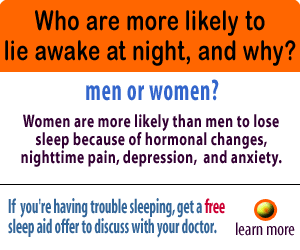Easing the Pain
The pain of an unremitting headache may not be the stuff of sensational headlines, yet in terms of the cost to human productivity and quality of life, headaches pose a tremendous burden.
Headache disorders affect two-thirds of adult men and more than 80 percent of women in developed countries. They’re equally destructive in developing countries, according to the World Health Organization (WHO).
“There’s an attitude that headaches are not a disease, that they don’t threaten life in a meaningful way, but headache has a tremendous impact on quality of life,” said Dr. Ellen Drexler, director of the Headache Center at Maimonides Medical Center in New York City.

“Chronic daily headaches, meaning people with headaches more days than not, is 4 to 5 percent of the general population so it’s very, very large numbers in population terms,” Drexler added. “These are staggering proportions. Headache really exceeds the frequency of many other illnesses and, in terms of the amount of disability, is equal to many other illnesses.”
To increase awareness of this looming issue, the WHO and several international groups have launched a new campaign, “Lifting the Burden.” Specifically, the campaign hopes to increase awareness among government and health care authorities. Other groups involved are the International Headache Society, the World Headache Alliance and the European Headache Federation.
According to WHO figures, about half the people who suffer from a headache don’t get any treatment.
“Looking over the past 10 years, the proportion of patients who have consulted a physician has increased but it’s still just under half,” Drexler said. “More than half have never seen a physician and the number who have never been prescribed a medication is much larger.”
Productivity Costs
n the United States, headaches are one of the leading causes of missed work and school. And the absenteeism, lost productivity and medical expenses cost American industry some $50 billion a year.
Dr. Seymour Diamond, executive chairman of the National Headache Foundation, said headaches can be roughly divided into three groups.
Less than 2 percent are symptoms of some other malady, such as a brain tumor or aneurysm.
By far the largest group, about 80 percent, are tension headaches, most of which are treated with over-the-counter medications. People with this type of headache usually only seek a doctor’s help when the problem becomes a daily occurrence.
The third group is “vascular headaches,” which include migraines and cluster headaches and can be extremely debilitating. They involve blood vessels and may also involve the nervous system.
“Migraines affect about 18 percent of women and 6 percent of men at some time in their life, most commonly in their most productive years, the 20s to 50s,” Drexler said. “There’s a general effect on productivity and ability to enjoy life.”
Hormones and Headaches
Some 28 million to 30 million people in the United States are affected by migraines, 70 percent of them women. “One of the triggers is the hormone variation in any one-month cycle and women have this, where, more or less in most instances, men’s hormones are stable,” Diamond said.
There are specific medications for migraines, namely the class of drugs called triptans. Still, these debilitating headaches are probably one of the most undertreated of conditions, Diamond said. They are frequently misdiagnosed or underdiagnosed.
About 90 percent of cluster-headache sufferers, on the other hand, are male.
“It usually centers around one eye and is called cluster because it occurs in a series or bunch, several in a day for two or three or four months and then they go away,” Diamond said. “It’s a very severe, terrifying pain and the only suicides we see from headaches are with cluster-headache patients because of the severity. It will wake a man up from a sound sleep. It’s one of the most severe pains that a man can get.”
Cluster headaches can involve other symptoms as well, including drooping eyelids, tearing of the eye and congestion of the nose. Again, there are medications to lessen the pain during an attack, to stop short an attack and to prevent an attack.
The American Council for Headache Education recommends you contact your doctor if:
* Your headache is accompanied by a stiff neck, fever, shortness of breath, dizziness, drowsiness, severe vomiting, unsteadiness, weakness, slurred speech, numbness, tingling or unexpected symptoms affecting your eyes, ears, nose or throat.
* You have three or more headaches a week.
* You take a pain reliever daily or almost daily.
* You take more than recommended doses of over-the-counter medications.
* Your headaches are triggered by exertion, coughing, bending or sex.
* Your headache keeps worsening and won’t go away.
* Your headaches began after age 50.
* Your headaches began after a Head injury.
Revision date: July 3, 2011
Last revised: by Dave R. Roger, M.D.